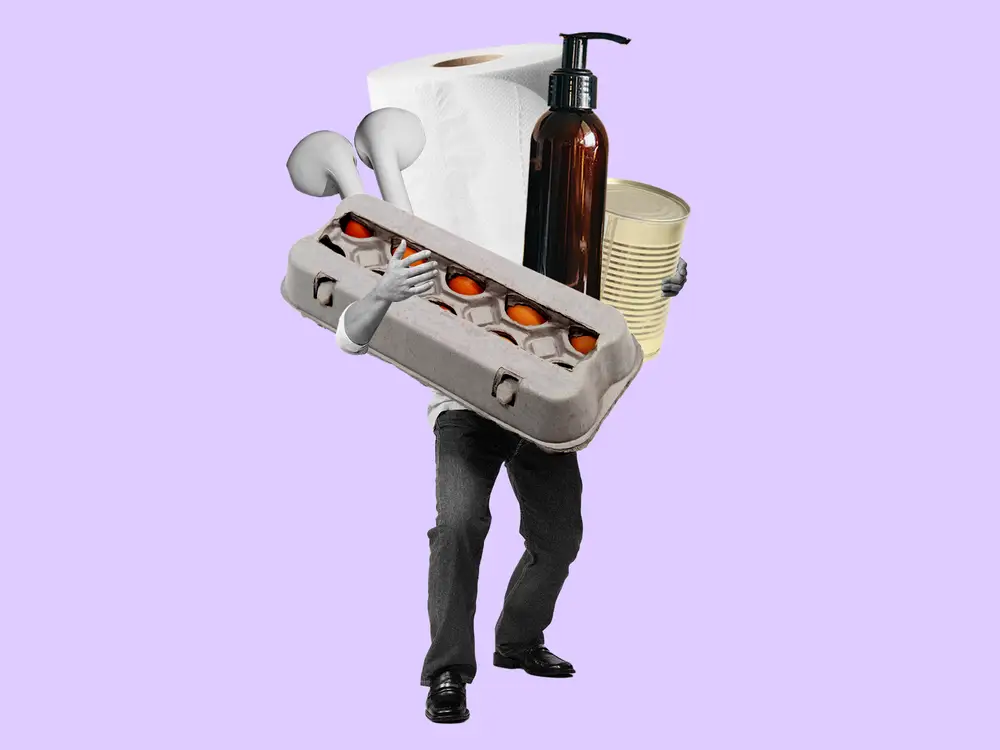Meet the Americans stocking up on cars, skincare, and toilet paper ahead of Trump’s potential trade restrictions

Kristen Hull bought a new car last weekend.
The 38-year-old accountant had been planning to do it in six months. But following Donald Trump’s presidential election victory, Hull heard that car costs could surge if his tariff plans are enacted.
“I was just thinking, if not now, maybe in six months it might be way out of my price range,” Hull told B-17. She’s also looking into buying a new laptop and stocking up on winter clothing.”I’m really concerned about the cost of things, and so I just went ahead and took the jump.”
On the campaign trail, Trump proposed a 60% tariff on imports from China and 10% to 20% on goods from other countries. It’s still unclear how and when he will enact the tariffs and how big he will go.
“Companies have made clear in many cases that they will pass the higher prices on to consumers,” said Indi Dutta-Gupta, a fellow at both Georgetown University and the Roosevelt Institute, a left-leaning think tank.
Firms, including AutoZone and Columbia Sportswear, have already indicated they will raise prices if tariffs are enacted.
Some shoppers and small businesses told B-17 they are also preparing. TikTok videos recommending viewers stock up on certain goods like hair, makeup, and clothing products are racking up thousands of views, and panicked comments.
Karoline Leavitt, a Trump-Vance transition spokeswoman, told B-17, “Trump instituted tariffs against China that created jobs, spurred investment, and resulted in no inflation.”
Considering the larger scale of Trump’s proposals this time around, trade experts have identified goods, including car parts, apparel, and electronics, as products at risk of getting more expensive under Trump’s tariff proposals.
“It’s going to be a big shift if that does come to fruition,” Hull said. “We pay tariffs on some things anyway, but the talk of the massive increase is a little bit alarming to me.”
Adopting “prepper” methods and stocking up on groceries
One 42-year-old mother of three in Southern Indiana, whose identity is known to B-17 but withheld over privacy concerns, is leaning back into her prepper roots. Before the pandemic and Trump’s second run, she tried to forget the “craziness” of her old-school doomsday prepper background. She was raised by “one of the original conspiracy theorist guys who had serious distrust of the government,” she said.
But she’s leaned back into it. She estimates that her family has spent upwards of $2,800 to $3,000 slowly preparing and stockpiling goods, including everything from buying meats from a local butcher and deep-freezing them to dehydrating food for a longer shelf life. She got started early: As soon as she had a “gut feeling” Trump was running again, her family began their slow stockpile.
“We aren’t like the ones you used to see on Discovery Channel with bunkers and huge stashes of stuff, but we have enough to get through 3-5 years at least of hard times,” she said.
Dutta-Gupta said it’s reasonable for families to want to stock up on imported goods, as trade wars and tax changes could reduce incomes and raise the cost of living.
Marissa Garcia, 38, said she didn’t pay much attention to tariffs prior to the election.
After Trump’s victory, she said, “I started making a list of the potential items that could be affected, and then narrowing them down to the actual things that would affect my family, the things that I would be sad about if we couldn’t afford next year.”
She said that the week after the election, she “went to the store and made my first of hopefully many shopping trips to start stocking up on them.”
Items on Garcia’s list include frozen fruits and vegetables, garlic, coffee, tea, and bread, all of which would be subject to tariffs. She also said she’s planning to stock up on hygiene supplies like sanitizer and masks. These purchases are costing around an additional $50 on her grocery trips, and although money is tight — she got laid off last year and is freelancing as she looks for a permanent role — she said she anticipates an even greater financial strain under Trump’s proposed policies.
An analysis from the left-leaning Center for American Progress found that Trump’s tariff plans would cost the average household an extra $1,500 a year, and the nonpartisan Peterson Insitute estimated that Trump’s proposed 60% tariff on Chinese goods would boost inflation by 0.4 percentage points in 2025.
Garcia said that learning of those estimates alarmed her. “My family cannot afford that. This year was rough enough, and that was really surprising and also just a scary feeling,” she said.
Small business owners are trying to stock up, too
Worries about potential tariffs are already taking a financial toll on Beatrice Barba, 39, who owns a small business that produces plastic-free cups.
Barba said she imports most of the materials she needs to produce her cups from China. She’s considering purchasing a year’s worth of inventory now, which she estimates would cost up to $200,000 plus the price of additional warehouse space.
She said taking that risk is worth it because she wants to do everything she can to ensure she does not have to raise the price of her goods down the road.
As a longer-term solution, she’s working with a developer to build a health advice app — a business she plans to prioritize because an app would not be subject to tariffs.
Lisa Evans, a 43-year-old salon owner in Jacksonville, Florida, is examining where her products are sourced. Even hair color dyes manufactured in the US might contain ingredients from abroad, and their prices could surge.
Much of the hair in already-costly extensions is sourced from China, and she worries how much more expensive that will get. At this point, she’s focusing on padding inventory going into the next year.
“It’s like hope for the best, but prepare for the worst,” she said.
Jonathan Gold, vice president of supply chain and customs policy at the National Retail Federation, told B-17 that even though it’s still unclear what exactly Trump will implement, it’s not a bad idea for both companies and consumers to prepare for any impacts.
“We’re in a very different economy now than when we were back in 2018 when the initial China tariffs were put in place, and the scale and scope of what is being proposed is going to impact everything,” Gold said. “Unfortunately, companies aren’t able to absorb all of that, so they’re going to have to pass on some of those costs to consumers.”
Javon Ford, a 30-year-old chemist in Los Angeles, said that tariffs can create a “roadblock” to procuring raw materials. Ford is considering stocking up on color pigments for cosmetics and is gearing up to contact suppliers and order materials before January 2025. But it’s impossible to stock up on everything or know what might be in demand over the next four years — so tariffs could still mean adjusting prices to keep profit margins consistent.
With so much uncertainty regarding Trump’s tariff proposals, it’s difficult to plan. For Hull, the recent car buyer, all she said she can do is budget and hope she’s prepared for if and when higher tariffs come.
“It’s mostly just waiting to see what happens,” she said, “and just trying to get my savings account back up a little bit.”






